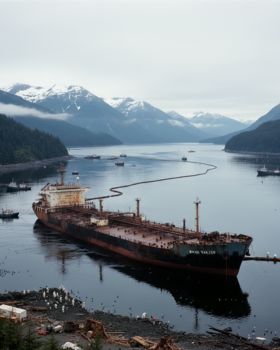Disclaimer:
This article is based on information from publicly available reports and is intended for educational purposes only. It does not assign legal responsibility to any party.
On April 20, 2010, according to publicly available records, the Deepwater Horizon offshore drilling rig suffered a catastrophic blowout, leading to an explosion, fire, and one of the largest environmental disasters in modern history. Known widely as the Deepwater Horizon disaster or the 2010 Gulf oil spill, the incident caused widespread ecological, economic, and operational challenges that continue to be studied today.
While this tragedy is often remembered for its environmental consequences, it also serves as a powerful case study in the importance of safety measures, contractor oversight, and effective risk management.
The Incident – What Happened?
According to official investigation reports, the Deepwater Horizon rig, operated by Transocean and under lease to BP, was drilling a deep exploratory well in the Macondo Prospect, located in the Gulf of Mexico. During routine operations, a well blowout occurred, causing uncontrolled oil and gas to surge to the surface.
The blowout preventer—a critical piece of safety equipment—failed to seal the well, leading to a massive explosion and fire on the rig. Tragically, lives were lost, and the oil spill continued for 87 days before it was finally capped.
The Scale of the Oil Spill
The Deepwater Horizon oil spill released an estimated 4.9 million barrels of crude oil into the Gulf of Mexico. This extensive discharge made it one of the largest accidental marine oil spills in history.
The spill’s spread affected thousands of square miles of water, dozens of coastal communities, and numerous species dependent on the Gulf’s ecosystem.
Environmental Impact – A Long-Lasting Legacy
The Deepwater Horizon environmental impact has been profound and long-lasting:
- Marine Life: Fish, dolphins, sea turtles, and other marine animals faced habitat destruction, reduced populations, and health complications.
- Bird Populations: Oil contamination harmed nesting sites and reduced survival rates for coastal and migratory birds.
- Ecosystem Health: Coral reefs, marshlands, and seagrass beds suffered significant damage, disrupting the food chain and long-term biodiversity.
- Fisheries & Livelihoods: The fishing industry experienced severe losses due to contamination, closures, and consumer concerns.
Safety Failures and Lessons Learned
The Deepwater Horizon tragedy revealed key safety gaps in the oil and gas sector, many of which can be applied broadly across high-risk industries:
- Contractor Oversight
Multiple contractors were involved in the operation. Public investigation reports, including those by official agencies, suggested that gaps in accountability and safety protocol alignment may have been contributing factors. - Equipment Reliability
The failure of the blowout preventer showed the critical need for routine testing, redundant systems, and contingency planning. - Risk Awareness and Communication
Reports noted that early warning indicators may not have been acted upon with sufficient urgency. Stronger communication channels between operators and contractors could have changed the outcome. - Emergency Preparedness
Response plans at the time were insufficient to address an event of this magnitude. Regular drills, updated emergency plans, and cross-company training are vital in high-risk industries.
Prevention Through Proactive Safety Culture
Incidents like the Deepwater Horizon disaster highlight that prevention begins with a proactive safety culture. Key elements include:
- Comprehensive Safety Training: Ensuring all workers—employees and contractors—are trained for normal operations and emergencies.
- Transparent Reporting: Encouraging teams to report potential hazards without fear of repercussions.
- Integrated Risk Management: Using data, technology, and predictive analysis to identify risks before they escalate.
- Collaborative Oversight: Operators and contractors working as one cohesive safety unit.
Broader Implications for High-Risk Industries
The oil spill prompted significant regulatory changes, technological innovations, and global discussions about offshore drilling safety. However, its lessons extend beyond oil and gas to industries such as construction, manufacturing, and mining—anywhere that contractor oversight, hazard identification, and emergency readiness are essential.
Conclusion – Learning to Avoid the Next Disaster
The Deepwater Horizon oil spill was a turning point in global safety awareness. While the ecological damage was severe, its greatest value today lies in the lessons it left behind. By focusing on safety compliance, effective contractor management, and thorough risk prevention strategies, industries can greatly reduce the chance of repeating such tragedies.
Modern solutions, such as contractor portal, could help streamline compliance tracking, potentially improve oversight, and strengthen safety communication between multiple stakeholders. When technology is combined with a strong safety culture, it becomes a powerful shield against catastrophic incidents—protecting people, the environment, and business operations alike.
🚀 Learn how SHEQ Network can support safer workflows!
📧 info@sheqnetwork.com | 📞 +353 21 4536034
🔗 Learn more at sheqnetwork.com
📅 Ready for a personalized demo? Book your session here




